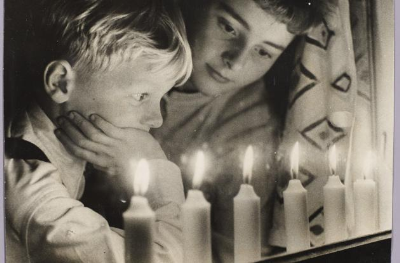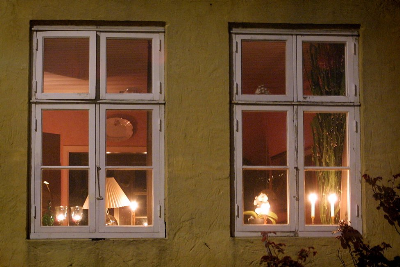
©
Увечері 4 травня багато данців традиційно запалюють свічки у вікнах — на згадку про завершення Другої світової війни та німецької окупації Данії. Цей жест став важливою частиною національної пам’яті, однак його історія дещо складніша, ніж здається на перший погляд. Популяризована телесеріалом Matador (1979), сцена, де героїня Елізабет Фріс розставляє свічки у вікнах на честь звістки про визволення, закарбувалася в пам’яті багатьох поколінь. Втім, за словами історика Сьорена Вертера К'єра Расмуссена, у саму ніч 4 травня 1945 року подібна дія не була масовою — насамперед через дефіцит парафіну під час війни. Справжній початок традиції поклала кампанія 1946 року, організована Фондом свободи — ініціативою, що виникла з руху спротиву. Увечері 4 травня по всій країні відбувалися святкові заходи, а запалені свічки слугували не лише знаком пам’яті, а й способом зібрати кошти на підтримку колишніх учасників опору. Акції тривали щороку до 1955-го й мали великий суспільний відгук. Згодом саме запалена свічка стала потужним символом свободи й національної єдності, якого дотримуються і сьогодні. Історики зазначають, що традицію нині переважно підтримує старше покоління, однак у кризові періоди — зокрема, під час пандемії COVID-19 або на тлі війни в Україні — вона знову отримує нове значення. Простота цього жесту та універсальність послання роблять його особливо живучим: «Це символ, у якому кожне покоління може знайти власний сенс».
A Candle in the Window as a Symbol of Freedom: How Denmark's May 4th Tradition Began
On the evening of May 4th, many Danes light candles in their windows to commemorate the end of World War II and the German occupation of Denmark. This gesture has become a deeply rooted part of the national memory — but its origins are more complex than they might seem. Popularized by the 1979 TV series Matador, a scene where the character Elisabeth Friis places candles in the windows to mark the news of liberation left a lasting impression on generations. However, according to historian Søren Werther Kjær Rasmussen, this act was not widespread on the actual night of May 4th, 1945 — mainly due to wartime shortages of paraffin. The true beginning of the tradition came in 1946 with a campaign initiated by the Freedom Fund, an organization born from the Danish resistance movement. That evening, celebrations took place across the country, and the lit candles served not only as a tribute to liberation but also as a fundraising effort to support former resistance members. These annual campaigns continued until 1955 and gained wide public support. Over time, the candle became a powerful symbol of freedom and national unity — one that still holds meaning today. Historians note that the tradition is now largely upheld by older generations, though it regains relevance during times of crisis — such as the COVID-19 pandemic or amid the war in Ukraine. The simplicity of the act and the universal nature of its message make it especially enduring: “It’s a symbol in which each generation can find its own meaning.”

©
771